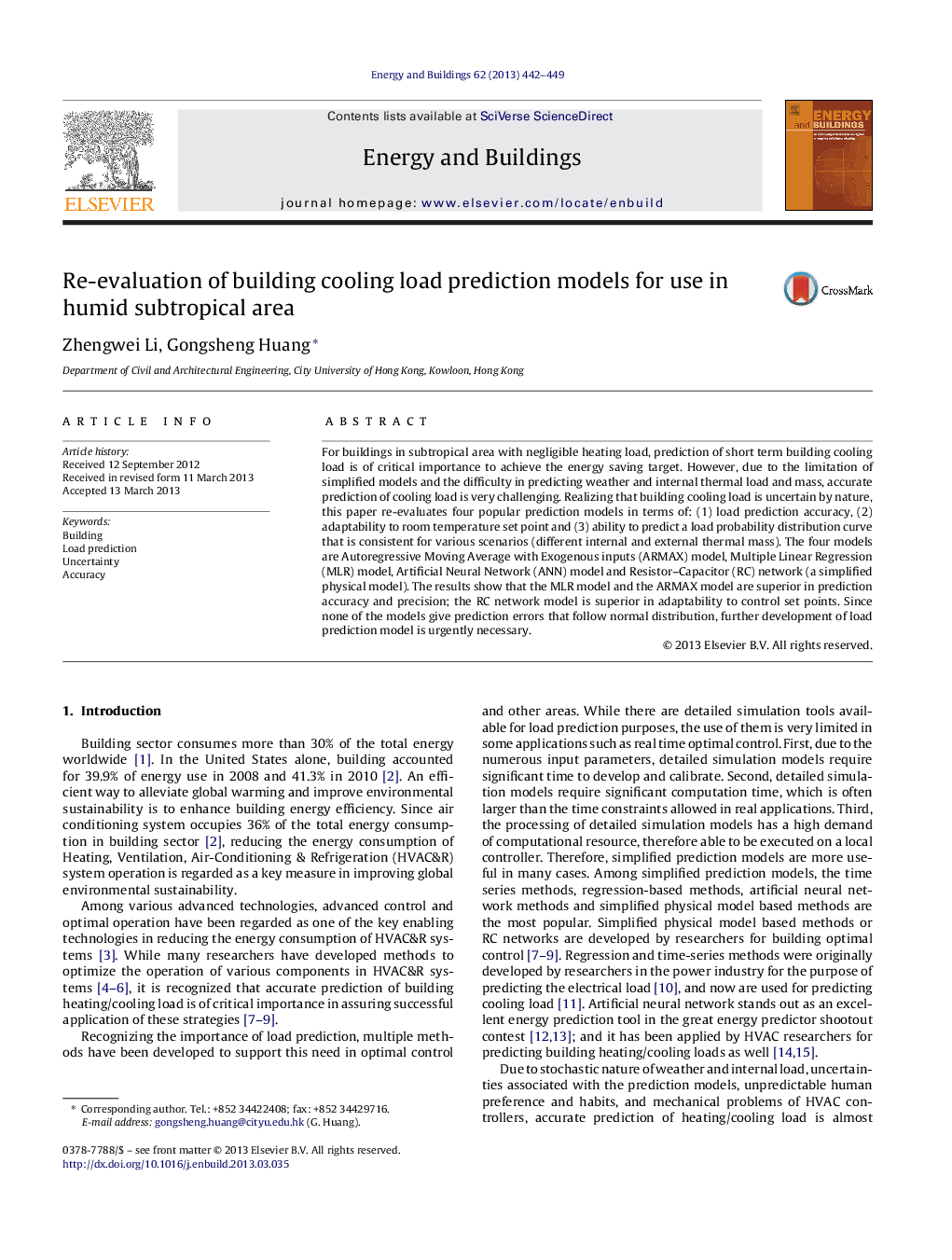| کد مقاله | کد نشریه | سال انتشار | مقاله انگلیسی | نسخه تمام متن |
|---|---|---|---|---|
| 263304 | 504071 | 2013 | 8 صفحه PDF | دانلود رایگان |

• Four building load prediction methods are compared.
• Methods are compared in terms of accuracy, general applicability and adaptability.
• Results are useful for researchers in the area of building energy efficiency.
For buildings in subtropical area with negligible heating load, prediction of short term building cooling load is of critical importance to achieve the energy saving target. However, due to the limitation of simplified models and the difficulty in predicting weather and internal thermal load and mass, accurate prediction of cooling load is very challenging. Realizing that building cooling load is uncertain by nature, this paper re-evaluates four popular prediction models in terms of: (1) load prediction accuracy, (2) adaptability to room temperature set point and (3) ability to predict a load probability distribution curve that is consistent for various scenarios (different internal and external thermal mass). The four models are Autoregressive Moving Average with Exogenous inputs (ARMAX) model, Multiple Linear Regression (MLR) model, Artificial Neural Network (ANN) model and Resistor–Capacitor (RC) network (a simplified physical model). The results show that the MLR model and the ARMAX model are superior in prediction accuracy and precision; the RC network model is superior in adaptability to control set points. Since none of the models give prediction errors that follow normal distribution, further development of load prediction model is urgently necessary.
Journal: Energy and Buildings - Volume 62, July 2013, Pages 442–449